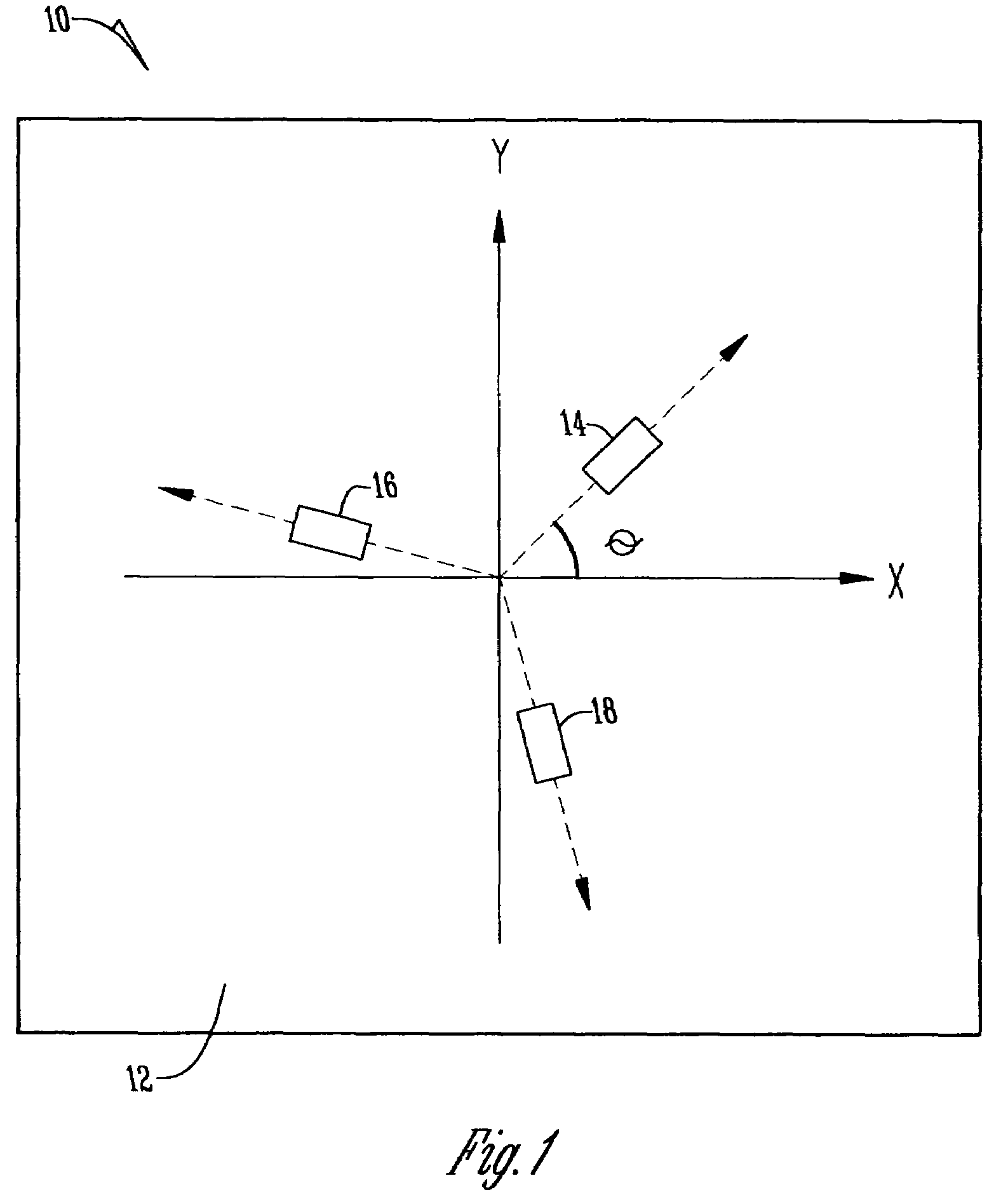Accelerometer based tilt sensor and method for using same
a technology of accelerometer and tilt sensor, which is applied in the direction of instruments, digital computer details, devices characerised by mechanical means, etc., can solve the problems of difficulty in determining whether the device is functioning properly, accelerometer cannot react to inclination at the same time, and it is difficult to precisely align the coordinate system of the accelerometer with the coordinate system of the desired measuremen
- Summary
- Abstract
- Description
- Claims
- Application Information
AI Technical Summary
Benefits of technology
Problems solved by technology
Method used
Image
Examples
Embodiment Construction
[0013]With respect to FIG. 1, a tilt sensor 10 is provided having a base 12 for fixation to a final assembled product, such as heavy machinery or, in a simplified application, a carpenter's level. The base 12 may include a housing (not shown) and is made of any conventional material known in the art.
[0014]At least three accelerometers 14, 16, and 18 are mounted to the base 12, as shown in FIG. 1. The present invention contemplates that additional accelerometers may be used for redundancy or to sense tilt in more than two directions. Additionally, accelerometers 14-18 include any type of force-based accelerometer that sense deviations in the force of gravity with the degree of tilt.
[0015]The accelerometers 14-18 are positioned in a common plane, such as an X-Y plane. While the X and Y axes typically are associated with those axes parallel to the horizontal, any orientation of the axes is contemplated by the present invention, including a Z or vertical axis. Preferably, the accelerome...
PUM
 Login to View More
Login to View More Abstract
Description
Claims
Application Information
 Login to View More
Login to View More - R&D
- Intellectual Property
- Life Sciences
- Materials
- Tech Scout
- Unparalleled Data Quality
- Higher Quality Content
- 60% Fewer Hallucinations
Browse by: Latest US Patents, China's latest patents, Technical Efficacy Thesaurus, Application Domain, Technology Topic, Popular Technical Reports.
© 2025 PatSnap. All rights reserved.Legal|Privacy policy|Modern Slavery Act Transparency Statement|Sitemap|About US| Contact US: help@patsnap.com


